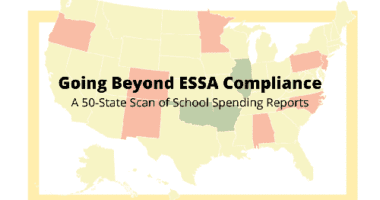So What Is PISA, and What’s All of the Fuss About?
The Programme for International Student Assessment (PISA) is one of the best ways — one of the only ways, in fact — that we have of comparing our teenagers’ knowledge and skills to those of teens in other countries. Unlike many other assessments, PISA isn’t based on what students have learned in school; instead, it looks at whether students can apply what they’ve learned to new situations.
As such, when the 2012 results are released tomorrow, it’s important to look beyond just how the United States ranks compared to other developed countries. Knowing our relative rank gives us an idea of whether our students are, on average, competitive with their peers across the globe. But we need to look beyond that if we want to prepare our students — all of our students — to meet the demands of life after high school. To do that, we should ask questions like:
- How has the performance of U.S. teenagers changed since 2000? Are more students, regardless of race or background, demonstrating high-level skills?
- How has performance changed for students at all points on the achievement continuum?
- How do gaps between students of higher and lower socioeconomic status in the U.S. compare to those in other nations?
Once we know where the United States stands relative to other nations and how performance for students overall and groups of students has changed, we must learn from other nations that are outperforming us on the measures we care about. For example, what can the U.S. learn from the highest-performing nations and economies? From those that are rapidly improving? From those that have narrowed gaps between students from different socioeconomic backgrounds?
It’s also important to look at changes since the 2009 round of PISA, when all 34 members of the Organisation for Economic Co-operation and Development (OECD) participated in PISA, along with 31 partner economies that chose to take part. That year, American teens performed near the middle of the pack of developed nations in reading and science, but among the lower-performing developed nations in math. Only about 1 in 3 students demonstrated high-level skills in reading (skills like locating and organizing information, drawing on public knowledge to make interpretations, or making multiple inferences about unfamiliar topics). About 1 in 4 did so in math.
What’s more, in 2009, the gap between students with higher and lower socioeconomic status in the United States was wider than the gap in nearly every other developed nation. U.S. students with low socioeconomic status performed worse than those with low socioeconomic status in many other nations, in spite of the fact that U.S. teens were actually better off economically than their peers in many other nations. In fact, if teens in all OECD countries had the same socioeconomic background, the United States would have ranked worse in reading performance than it actually did. The United States cannot close the gap with other countries unless it closes the gap between its own students.
Check back this month as we explore the 2012 PISA results to address these questions and more.










